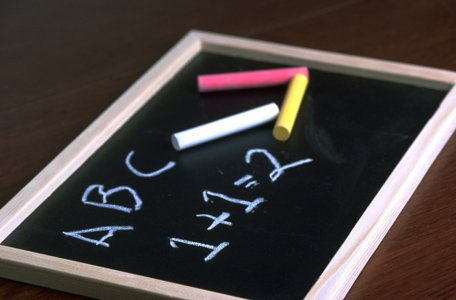Students across the country are increasingly failing a new type of standardized test.
Kids in New Jersey are performing below grade level in English and math. In Washington, D.C., the tests have revealed that only a quarter of students are “on-track for college.” In Arizona, two-thirds of students flunked.
Yet, despite these dismal results, there is some cause for celebration.
These new types of exams, called “problem-and-technology-based” assessments, measure how students arrive at an answer— not whether they’ve filled in the correct bubble. They aim to provide honest portraits of students’ progress.
Unfortunately, those portraits have been anything but pretty. But that’s okay. Problem-and-technology-based assessments test students on skills that actually matter in real life— like critical thinking and reasoning. Schools should double-down on this approach— and figure out how to meet the challenges it poses, rather than continuing along with the testing status quo.
Parents, school administrators and teachers have become exasperated by standardized tests in recent years— and understandably so. A recent study of the nation’s biggest school districts found that the average public-school student takes 112 standardized tests between pre-kindergarten and the end of high school. Eighth graders spend over 25 hours submitting to these exams.
This litany of tests has done little to raise student achievement. In the latest National Assessment of Educational Progress, the so-called “Nation’s Report Card,” math scores for fourth- and eighth-graders actually fell for the first time in the test’s 35-year history.
Worse, a growing obsession with boosting test scores at all costs has led to waves of cheating by teachers and administrators everywhere from Georgia to New Jersey. That’s thanks, in large part, to strict federal laws that punish school officials for failing to meet test-score requirements.
These reverse incentives— along with the dismal student outcomes they’ve engendered— are among the chief reasons Congress recently voted to repeal the most wide-ranging of these laws, No Child Left Behind.
The replacement bill that President Obama signed into law in December awards new freedom to states to organize their education systems as they see fit.
Test-weary school systems in search of more constructive ways of evaluating student performance should look toward problem-and-technology based assessments.
For starters, these assessments provide more value to students and teachers than traditional multiple-choice standardized tests, which often reward rote memorization. But memorization doesn’t necessarily reflect whether a student has actually learned or understands the material.
Problem-and-technology-based assessments, by contrast, ask students to apply critical-thinking and reasoning skills, mainly through written answers. These are exactly the skills that students need for success after school.
It’s also impossible for educators to “teach to the test” when that test is problem-and-technology-based. The only way to prepare students is to develop their problem-solving, critical-thinking and reasoning skills— and then to teach them to apply those skills.
Finally, problem-and-technology-based evaluations greatly reduce the likelihood of cheating. Since students must do more than merely choose the correct answer, it’s nearly impossible for kids to copy off their neighbors— or for a teacher to “signal” the right response during testing.
Students around the country may be underperforming on these new problem-and-technology-based tests. But for the first time in decades, standardized exams are aiming to test things that matter— and pushing students and their teachers to actually learn the skills that will help them succeed.
Alan Shusterman is Founder and Head of School for Tomorrow (SFT) with campuses in Silver Spring, Maryland; and Reston, Virginia.
